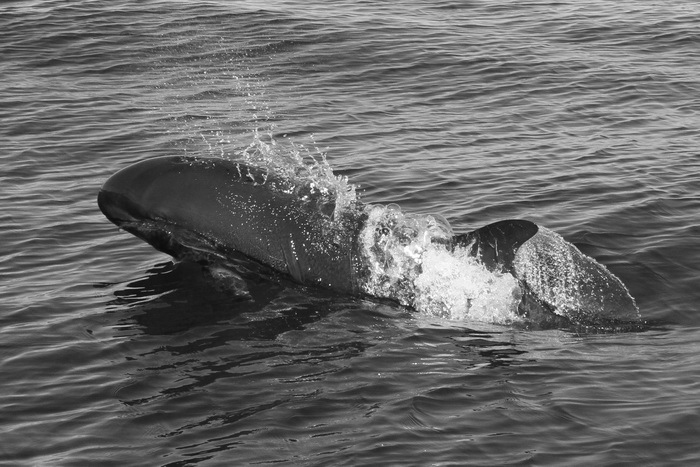Posted 05/21/2012
Just days before the NRDC lawsuit, NMFS released its most recent stock assessment reports (SARs) for marine mammals, including those in the Pacific that interact with Hawai`i-based fisheries. At the same time, it responded to the several comments that had been received on the draft SARs published last year.
Most of the comments on the report’s discussion of marine mammals in Hawai`i addressed false killer whales, for which NMFS had prepared a new assessment. (The agency is required to conduct annual updates for so-called “strategic” stocks – i.e., those stocks where the numbers of individuals removed by fishing exceed the level that can be removed without damaging the likelihood of long-term stock survival.) Both the insular and pelagic populations of false killer whales around Hawai`i continue to be designated as strategic stocks.
Comments from the Western Pacific Fishery Management Council and the Hawai`i Longline Association were harsh – but did not result in any changes to NMFS’ assessment.
Kitty Simonds, Wespac executive director, criticized the assessment for its allegations of a decline in the Hawaiian insular stock of false killer whales. This, she claimed, was “inconsistent with NMFS’s own best population estimate of the stock over the last decade.”
In response, NMFS noted that “the Population Viability Analysis conducted by the Biological Review Team assessed all data sources, including those available from the 1990s aerial surveys, and derived the 9 percent average decline in a statistically robust analysis.”
Simonds and the HLA also complained that a November 2011 report prepared for the Pacific Scientific Review Group (SRG) found that the pelagic population of false killer whales around Hawai`i is much greater than previous estimates suggested.
But that November 2011 report, NMFS noted, was not available when the draft SAR was prepared and, in any case, the data used in that later report are still preliminary. “As a result,” NMFS wrote in response to the comment, “it is inappropriate to use interim results that NMFS and the SRG feel inadequately represent the uncertainty inherent in the data sets that underestimate uncertainty and overestimate the minimum abundance.”
A copy of that report was attached to the HLA’s comment letter. The cover page indicates that it is intended only for review by the SRG: the warning “DO NOT CITE” is printed clearly above the title.
Robin Baird of the Cascadia Research Collective, which has done extensive research on populations of false killer whales around the Hawaiian islands, noted that the draft assessment did not take account of elevated levels of PCBs in tissue samples taken from the animals. Also, Baird wrote, the draft assessment failed to mention declines in biomass of prey species. In response, NMFS added language to the final assessment “acknowledging the potential impacts of reductions in biomass of some prey species.”
Timothy Ragen, executive director of the Marine Mammal Commission, noted that in Hawai`i, “From 2005 to 2008, the estimated bycatch outside U.S. waters ranged from 0 to 8 whales per year… However, in 2009 the estimate … spiked to 37 animals.”
“This large increase,” Ragen continued, “suggests that U.S. bycatch outside the zone may be much higher and more uncertain than previously thought. Longline vessels from other nations operating in the same areas are also likely to take pelagic false killer whales, adding to pressure on the stock and uncertainty about its status.” NMFS responded that it is preparing a comprehensive international action plan for marine mammal conservation, which will likely be released mid-year.



Leave a Reply